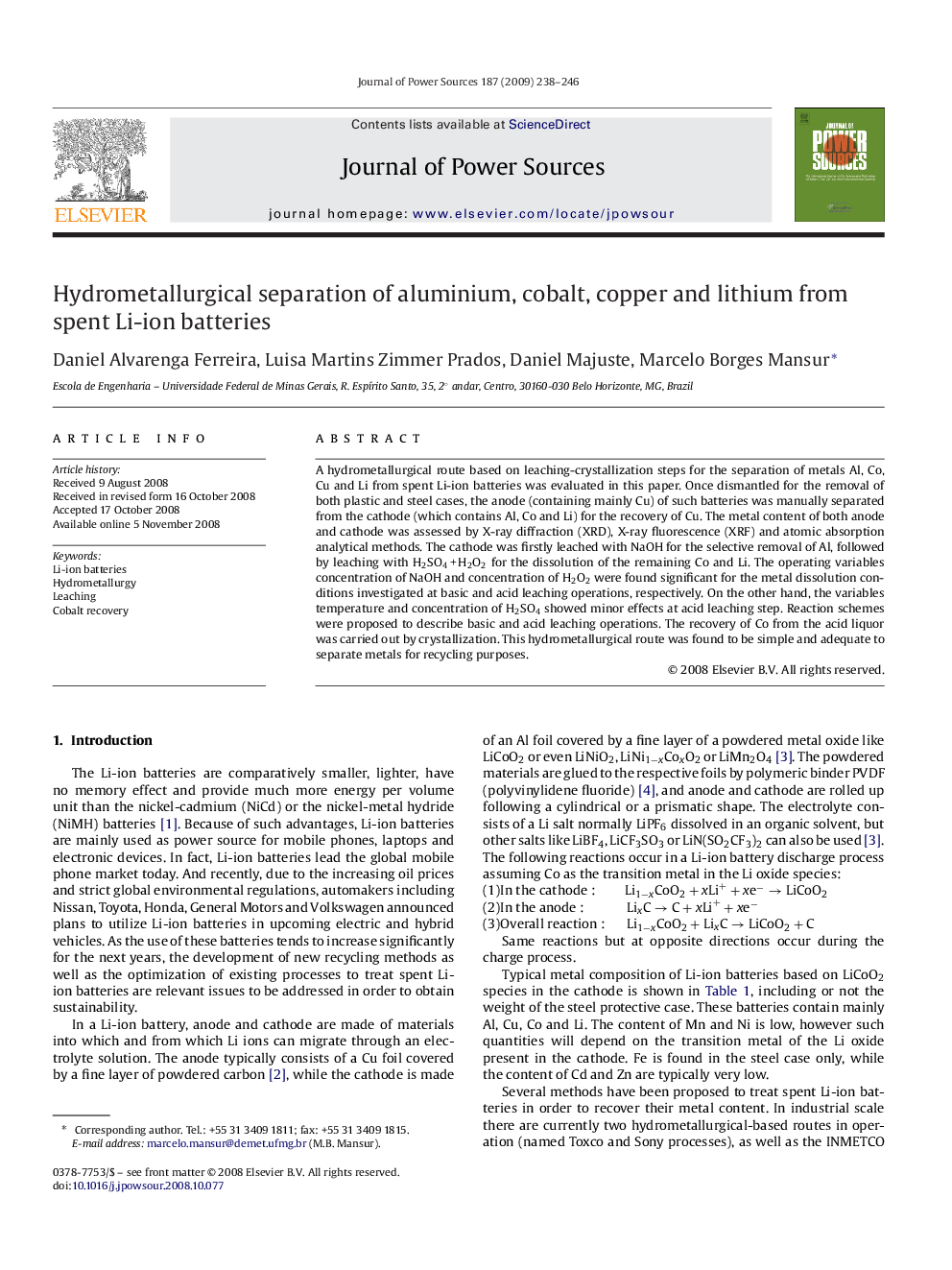| Article ID | Journal | Published Year | Pages | File Type |
|---|---|---|---|---|
| 1285344 | Journal of Power Sources | 2009 | 9 Pages |
A hydrometallurgical route based on leaching-crystallization steps for the separation of metals Al, Co, Cu and Li from spent Li-ion batteries was evaluated in this paper. Once dismantled for the removal of both plastic and steel cases, the anode (containing mainly Cu) of such batteries was manually separated from the cathode (which contains Al, Co and Li) for the recovery of Cu. The metal content of both anode and cathode was assessed by X-ray diffraction (XRD), X-ray fluorescence (XRF) and atomic absorption analytical methods. The cathode was firstly leached with NaOH for the selective removal of Al, followed by leaching with H2SO4 + H2O2 for the dissolution of the remaining Co and Li. The operating variables concentration of NaOH and concentration of H2O2 were found significant for the metal dissolution conditions investigated at basic and acid leaching operations, respectively. On the other hand, the variables temperature and concentration of H2SO4 showed minor effects at acid leaching step. Reaction schemes were proposed to describe basic and acid leaching operations. The recovery of Co from the acid liquor was carried out by crystallization. This hydrometallurgical route was found to be simple and adequate to separate metals for recycling purposes.
